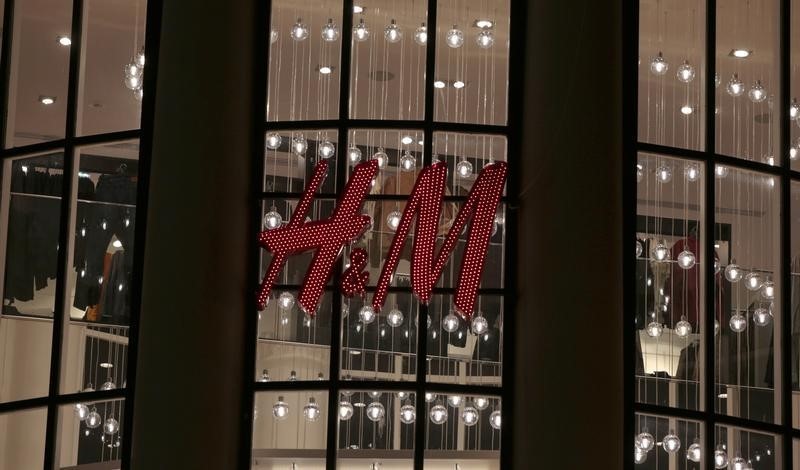By Anna Ringstrom
STOCKHOLM (Reuters) - Swedish budget fashion firm Hennes & Mauritz's (ST:HMb) sales growth missed forecasts in February, despite a pick up due to price cuts that are expected to dent its quarterly profit.
H&M, the world's second-biggest fashion retailer after Zara owner Inditex (MC:ITX), warned in late January that markdowns to shift winter stocks, after unusually warm weather in key markets, would hit December to February results, which are its fiscal first quarter.
Sales in February increased 10 percent in local currency terms from a year earlier, just below a mean forecast in a Reuters poll of analysts of an 11 percent rise. H&M's growth in sales was 7 percent in January and 10 percent in December.
H&M shares were 2.6 percent lower at 0840 GMT on Tuesday, after it posted net sales in December through February of 43.7 billion crowns (4 billion pounds), up from a year-ago figure of 40.3 billion but below a mean forecast of 44.0 billion.
Bernstein analyst Jamie Merrimann said markdowns were probably at the high end of management's forecasts, leading to further pressure on her gross quarterly margin expectations.
H&M, which in January also warned high purchasing costs due to a strong dollar would weigh on quarterly margins, is due to publish its full earnings report for the period on April 6.
"The low-light of that quarter is likely to be a very weak gross margin, with profitability hurt by dollar strength and post-Christmas mark-downs," Societe Generale (PA:SOGN) analyst Anne Critchlow said.
H&M, which has most sales in Europe, where Germany is its no.1 market, sources more in Asia in U.S. dollars than Inditex.
Inditex, which has been less exposed to unexpected weather swings in Northern Europe, and which has a distribution model that differs from H&M's, said last week its sales in the five weeks from Feb. 1 were up 15 percent.
Societe Generale's Critchlow said the differences between H&M and Inditex are increasingly apparent.
"Inditex is less affected by dollar strength due to its reliance on close-to-home sourcing for 65 percent of its product," she said.
"Gross margin weakness due to markdowns is not typically a feature of Inditex’s reporting because of the short lead-time model, which brings accuracy benefits when ordering product from suppliers".
